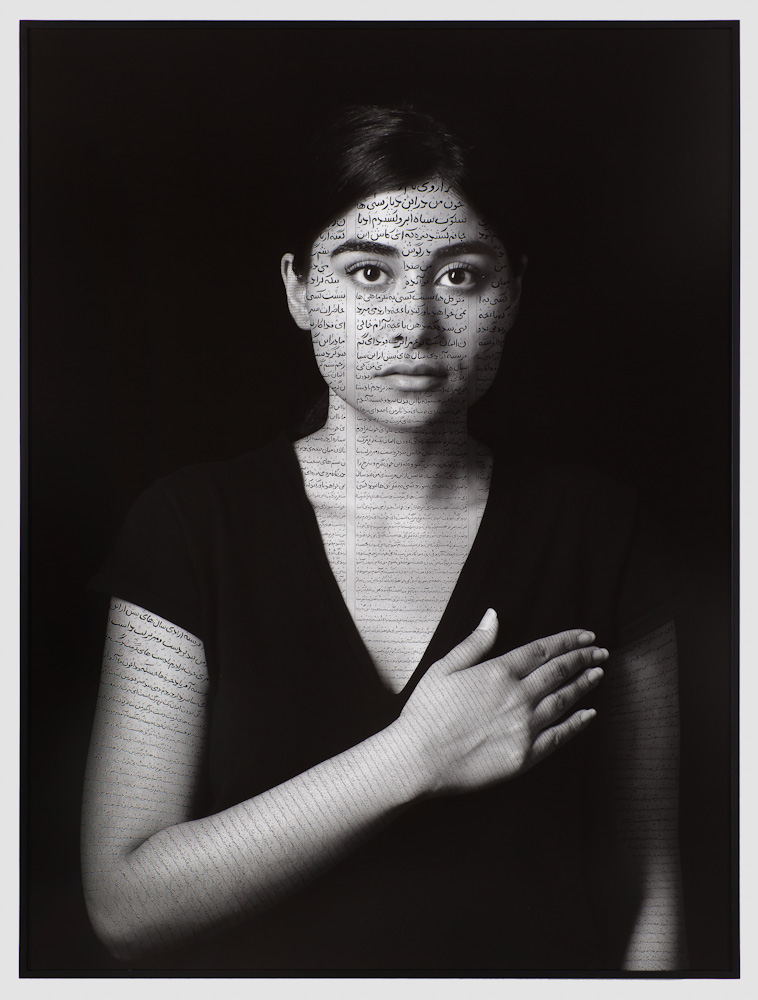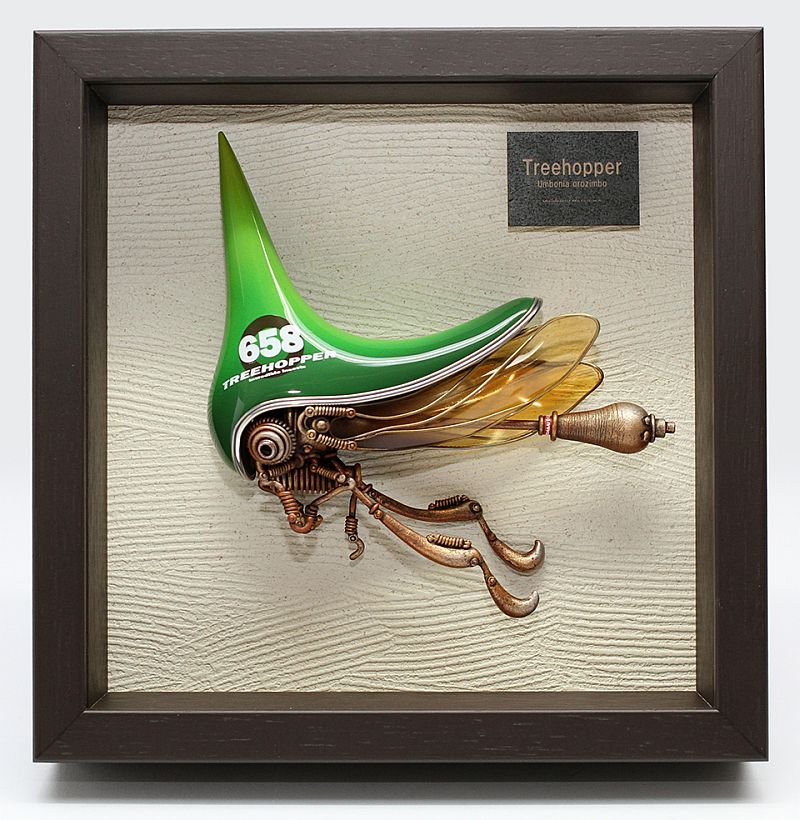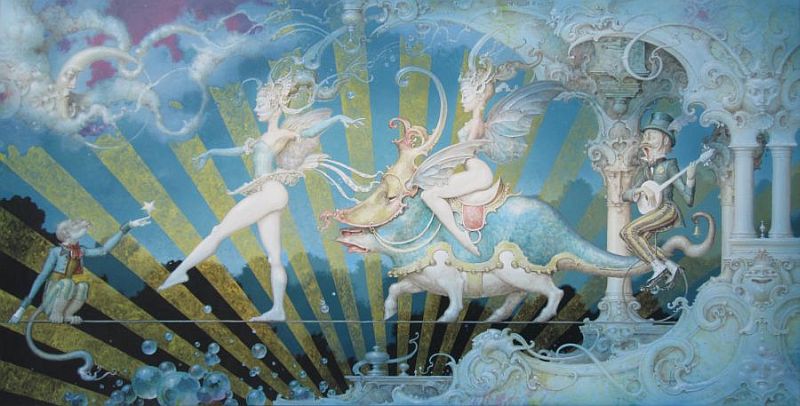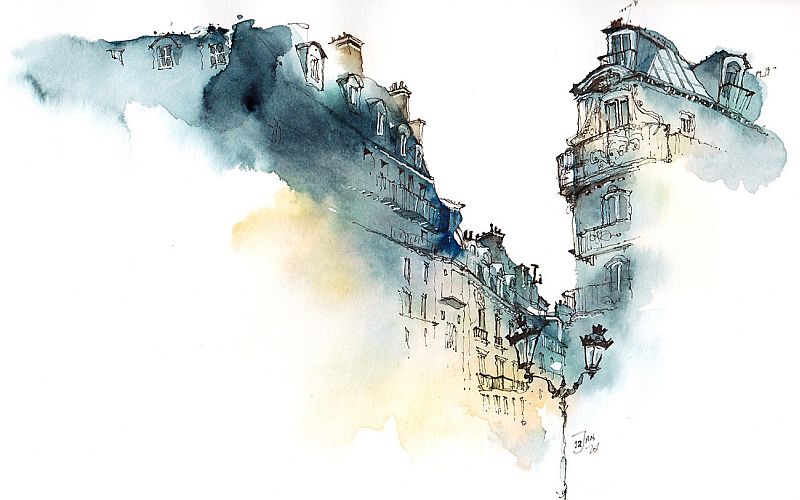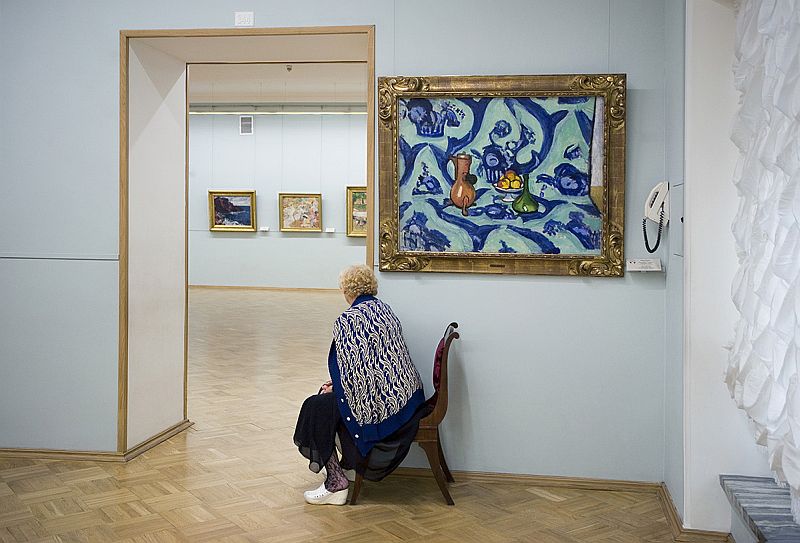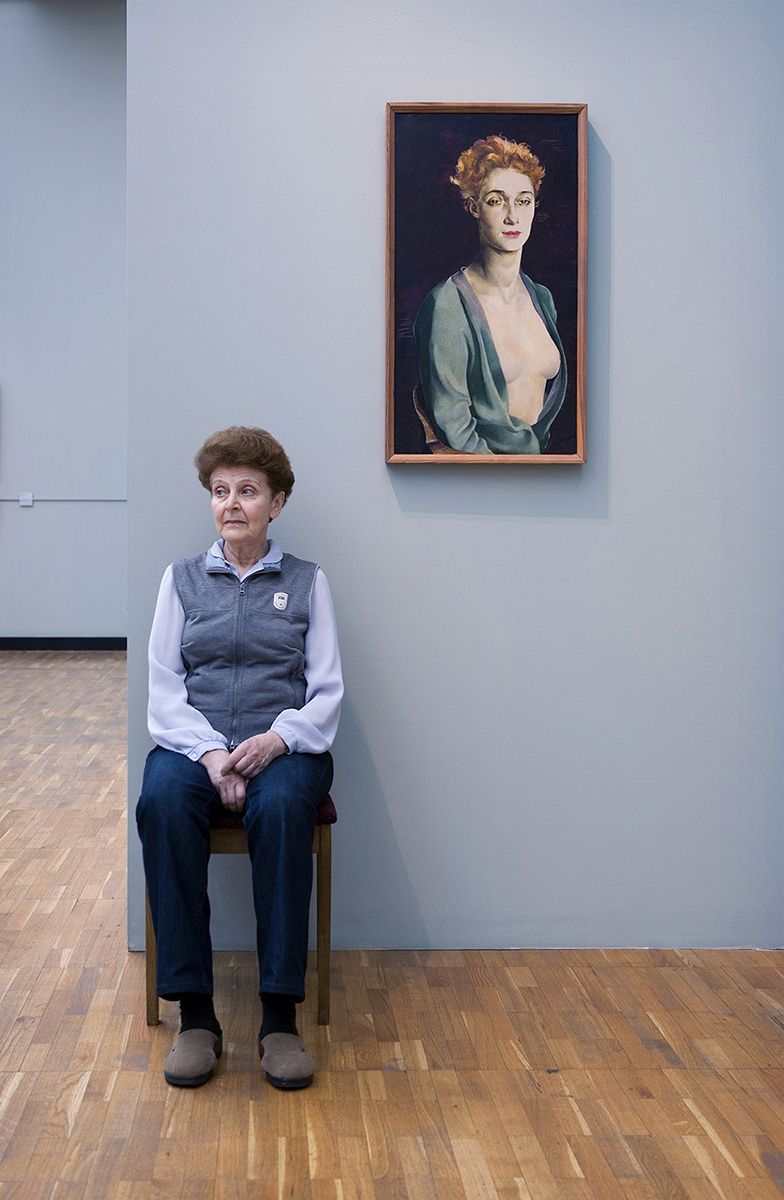Hayv Kahraman
Hayv Kahraman en su estudio de Oakland / in her Oakland studio, California
Hayv Kahraman nació en Bagdad, Irak, en 1981.
Se trasladó a Suecia cuando tenía 11 años, y estudió diseño gráfico en la Academia de arte y diseño en Florencia, Italia. Actualmente vive y trabaja en San Francisco.
Los delicados y elegantes dibujos gráficos de Kahraman presentan temas inquietantes y dolorosos con irresistible gracia y belleza. Ella toma su inspiración de impresiones tradicionales japonesas, el art nouveau, la pintura de miniaturas persa e imágenes de moda. Mientras que artistas como Laylah Ali, Marcel Dzama y Amy Cutler utilizan la fantasía y dibujos entrañables para expresar las complicadas y duras realidades del mundo real, las ilustraciones de Kahraman convierten temas difíciles y aspectos específicos de la identidad de Oriente Medio en accesibles y seductoras imágenes de cuento de hadas.
"Hegemonía / Hegemony", óleo sobre lino / oil on linen, 52" x 86", 2009
«Mis mayores influencias son principalmente la filosofía francesa y escritoras como Simone de Beauvoir y la liberal feminista estadounidense Betty Friedan. Ellas revolucionaron la historia cuestionando los roles tradicionales de género y fueron abogadas por la igualdad de los sexos. Su obra es poética e inspiradora y me ha tocado profundamente»
"Apariencia de control / Appearance of control"
Óleo sobre paneles móviles / oil on mobile panels, 66" x 97" x 5", 2010
"Apariencia de control / Appearance of control" (detalle / detail)
«Obtengo inspiración de muchas de las ideologías feministas tanto teóricas como prácticas. Mientras que admiro la obra de Simone de Beauvoir y Judith Butler, también creo que el activismo colectivo no violento juega un papel fundamental en cambiar percepciones preexistentes. Mi obra consiste predominantemente en un activismo representativo. Es un poderoso instrumento de expresión no verbal, y ¿por qué no utilizarlo si puede ser un catalizador para el cambio social?»
"Dymaxion", óleo sobre lino / oil on linen, 42" x 70", 2012
"Llevando a hombros 1 / Carrying On Shoulder 1", óleo sobre lino / oil on linen, 173 x 76,3 cm., 2008
El sacrificio del cordero es una leyenda registrada tanto en le Corán como en la Biblia. Dios le había dicho a Abraham en una visión que sacrificara a su propio hijo como prueba de su devoción incuestionable. Al ver el alcance de la fe de Abraham, Dios permitió la sustitución del hijo por un cordero. Este evento se repite simbólicamente durante la festividad más importante de los musulmanes, cuando se sacrifican corderos como parte de las fiestas y celebraciones religiosas. Kahraman ilustra esta tabla desde una perspectiva femenina, apropiándose controvertidamente de un tema sagrado masculino para afirmar la igualdad feminista. En estas pinturas, los corderos sacrificados también pueden ser metafóricamente entendidos en relación a la práctica de los asesinatos de "honor".
"Plegando tela / Folding Sheet", óleo sobre lino / oil on linen, 52" x 86", 2009
«Las cuestiones políticas (especialmente las que se basan en temas de género) están muy presentes en mi obra. Siento la necesidad o incluso un sentido del deber de involucrarme en esos temas. Habiendo dejado Irak durante la guerra, me enfrento constantemente al hecho de que no estoy en mi país de origen, y mientras llevo una vida segura y apacible en occidente, mis paisanos y las mujeres sufren inenarrables guerras e injusticias. Como resultado he heredado un apetito por la rebelión que toma forma exclusivamente en mi obra.»
"Musical Chairs", óleo sobre panel / oil on panel, 48" x 80", 2010
"7 puertas / 7 Gates", óleo sobre lino / oil on linen, 50" x 60", 2009
«Soy una inmigrante iraquí desarraigada, y así será durante el resto de mi vida. Al dejar Irak a la tierna edad de 10 años, no fui capaz de digerir por completo mi herencia iraquí. Debido a la guerra fui lanzada a un país completamente diferente, con un conjunto diferente de reglas e idioma. Suecia se convirtió en mi pseudo-hogar y tuve que aprender a adaptarme. Occidente me dio una perspectiva más amplia de la vida y ensanchó mis oportunidades en gran medida, pero siempre me sentí empujada a regresar a mi herencia. Creo que esto se refleja en mi obra, y mis pinturas actúan como un portal y recordatorio de mi identidad. Siempre seré una turista, vaya donde vaya.»
"Migrante 4 / Migrant 4", óleo sobre panel / oil on panel, 45" x 70", 2010
«Mi obra temprana era más subjetiva. Crecí como una surrealista creyendo en el poder del subconsciente y los sueños. El mundo exterior en realidad no importaba, o al menos eso es lo que creía. Al madurar mi obra, aún utilizo el "dibujo automático" en el proceso de creación y pintura. Es una técnica considerada como un portal hacia la mente subconsciente por nada menos que André Breton. Implica un proceso de dibujo que no tiene pensamientos o reflexiones predeterminadas. No lo sigo totalmente, pero intento incorporarlo cuando comienzo con una pintura. Es muy interesante descubrir qué emerge y de alguna manera funciona como un diálogo entre mi obra y yo misma.»
"Migrante 3 y 1 / Migrant 4 & 1", óleo sobre panel / oil on panel, cada uno / each 45" x 70", 2010
"Sexual", óleo sobre lino / oil on linen, 42" x 68", 2009
«Shirin Neshat es mi heroína! (ver más abajo) Su obra es inmensamente inspiradora y es en realidad una pionera en este campo. Ahora mismo es un momento excitante para las artistas mujeres de Oriente Medio. Muchas han emergido con un poderoso lenguaje visual y se está haciendo historia.»
«Soy una soñadora. Aunque la presencia de referencias del mundo exterior es constante en mi obra, prefiero hacer un cocktail de realidad y mito. Encuentro más interesante contar una historia que está conceptualmente basada en una realidad tanto simbólica como intemporal. Yo gravito hacia formas de abordaje figurativo en mi lenguaje visual cuando exploro temas difíciles o brutales que tienden a ser demasiado dominantes. Así la respuesta intuitiva es llevar la brutalidad a una imagen más tolerable. Y ahí es donde aparecen el simbolismo y el mito.»
"Asad Babil (león de Babilonia / Babylon Lion)"
Óleo y barajas sobre panel / oil and playing cards on panel, 244 x 178 cm., 2011
"Asad Babil" (detalle / detail)
Hayv Kahraman was born in Bagdad, Irak, in 1981.
She moved to Sweden when she was eleven and studied graphic design at the Accademia di arte e design di Firenze in Florence, Italy. Now she lives and works in San Francisco.
Kahraman’s delicate yet elegant graphic drawings present troubling and painful subject matter with compelling grace and beauty. She gathers her insspiration from traditional Japanese prints, art nouveau, Persian miniature painting and fashion imagery. While artists such as Laylah Ali, Marcel Dzama and Amy Cutler use fantasy and disarmingly endearing drawings to express complicated, harsh real-world realities, Kahraman's illustrations turn tough issues and specific aspects of Middle Eastern identity into accessible and seductive fairy-tale imagery.
"Mapeos corporales / Corporeal Mappings" (2 vistas / 2 views)
Óleo sobre paneles móviles / oil on mobile panels, 199 x 199 x 12 cm., 2011
«Desarrollé el puzzle deslizante en un intento de enlazar este juego con la plasticidad del maleable cuerpo humano. Con la llegada de la medicina actual o más específicamente los avances quirúrgicos, nuestro cuerpo se ha vuelto más y más maleable y la idea de modificación y alteración ha ganado audiencia mundial. Ahora somos capaces de cambiar y alterar nuestra carne para conformar lo que percibimos como el ideal último de belleza.»
«I developed the sliding puzzle with the intent to link this game with the plasticity of the malleable body. With the advent of todays medical or more specifically surgical advancements, our body has become more and more malleable and the idea of modification and alteration has gained a worldwide audience. We are now able to change and alter our flesh to conform to what we perceive as the ultimate ideal beauty.»
"Mapas corporales / Corporeal Mappings" (detalle / detail)
«My major influences are mainly French philosopher and writer Simone de Beauvoir and American liberal feminist Betty Friedan. They revolutionized history questioning the traditionally accepted gender roles and were advocates for equality of the sexes. Their work is poetic and inspiring and has touched me deeply.»
«I draw inspiration from many of the feminist ideologies both theoretical and practical. While I admire the work of Simone de Beauvoir and Judith Butler, I also believe that collective non-violent activism plays a major role in changing pre-existing perceptions. My work predominantly consists of representational activism. It’s a powerful non-verbal instrument of expression, and why not use it if it can be a catalyst for social change?»
"Vista lateral antropométrica / Anthropometric Sideview" (obra y detalle / work and detail)
Tinta, pelo y alfileres sobre papel / ink, hair, and pins on paper, 40" x 40", 2011
"Cabezas sobre el plato / Heads on Plate", óleo sobre lino / oil on linen, 62" x 68", 2008
«Political issues - specifically gender based - are heavily present in my work. I feel a necessity or even a sense of duty to be involved in these issues. Having fled Iraq during war I’m constantly faced with the fact that I am not in the country of my origin, and while I live a safe and pleasant life in the west my fellow countryman and women suffer from unspeakable wars and injustices. As a result I’ve inherited an appetite for rebellion that exclusively takes form in my work.»
"Matrioshka", 2007
«I am an uprooted Iraqi immigrant and I will be so for the rest of my life. Having fled Iraq at the tender age of ten, I wasn’t able to fully digest my Iraqi heritage. Due to war I was thrown into a completely different country with a different set of rules and language. Sweden became my new pseudo home and I had to learn how to adapt. The west gave me a wider perspective on life and it broadened my opportunities greatly but I always felt a nudge to return to my heritage. I think this shows in my work, and my paintings act as a gateway and a reminder of my identity; I will always be a tourist wherever I go.»
"Desollando el cordero / Flaying the Lamb", óleo sobre lino / oil on linen, 173 x 76,3 cm., 2008
The Sacrifice of the Lamb is a legend which is recorded both in the Quran and the Bible. Abraham was told by God in a vision to sacrifice his only son as proof of his unquestioning devotion. In seeing the extent of Abraham’s faith God allows the substitution of a ram in the boy’s place. This event is symbolically repeated during the most important Muslim holiday where lambs are sacrificed as part of religious celebrations and feasts. Kahraman illustrates this fable from a woman’s perspective, controversially appropriating the sacred masculine theme to assert feminist equality. In these paintings the sacrificed lambs might also be metaphorically understood in relation to the practice of ‘honour’ killings.
"El paso del tiempo / Passing Time", óleo sobre panel / oil on panel, 68" x 76", 2010
«My early work was very subjective. I grew up as a surrealist believing in the power of the subconscious and dreams. The outer world didn’t really matter or at least that is what I believed. As my work has matured I still utilize “automatic drawing” in the process of creating a painting. It’s a technique considered to be a gateway to the subconscious mind by none other than Andre Breton. It entails a drawing process that has no predetermined thought or reflection. I don’t follow this fully but I try to incorporate it when I first start out on a painting. It’s very interesting to discover what surfaces and it sort of works as a dialog between my work and myself.»
«Shirin Neshat is my hero! (see below) Her work is immensely inspiring and she really is a pioneer in her field. It’s an exciting time for female artists from the Middle East right now. Many are emerging with a powerful visual language and history is being made.»
Tinta y alfileres sobre papel / ink and pins on paper, 40" x 76", 2011
"DesEncarnada 8 / DisEmbodied 8" (obra y detalle), óleo sobre panel con inserción de cuero crudo /
Oil on Panel with rawhide insert, 48" x 74", 2012
«I’m a dreamer. While drawing references to the outer world is constantly present in my work, I do prefer to mix a cocktail of both reality and myth. I find it more interesting in telling a story that is conceptually based on reality yet visually symbolic and timeless. I gravitate towards a figurative approach in my visual language and sometimes when exploring difficult and brutal themes it tends to be too overbearing. So the intuitive response is to translate the brutality to a more tolerable image. And this is where the myth and symbolism come in.»
"Bab el Sheikh", óleo sobre panel modular / oil on modular panel, 103" x 176", 2013
«Si eres un invitado que entra en una de esas casas, serás en primer lugar recibido por los miembros masculinos de la familia en el patio. A las mujeres no se les permite estar presentes. Generalmente están en el primero, segundo o tercer piso, mirando por estos paneles perforados con patrones que llamamos mashrabiya o shanashel en árabe. Así que las mujeres están allí. Están presentes en el sentido de que pueden ver lo que está pasando, lo cual es en realidad una forma de poder. Pero, otra vez, están extremadamente segregadas porque están fuera de contexto. Por eso es para mí muy interesante esta dinámica y el papel que juegan las figuras en las pinturas.»
"Body Screen" (vista parcial / partial view), nogal cortado a láser / laser-cut walnut, 35" x 78" x 2", 2013.
Jack Shainman Gallery exhibition
«If you are guest and entered in one of this homes, you will first be received by the male members of the family in the courtyard space. The women are not aloud, but they're present. They are usually in the first or second or the third floors looking through this perforated patterned screens we call mashrabiya screens or Shanasheel in arabic. So the women are in there. They're present and in a way they can see everything was going on, which is really a form of power. But then, again, they're extremely segregated 'cause they're out of the context. So that's really for me very interesting in that dynamic, and that's how the figures play into the paintings.»
"Bab el Sheikh" (detalle / detail)
"Toilette", óleo sobre lino / oil on linen, 42" x 68", 2009
_________________________________________________________________
Los textos están tomados del sitio web de la artista, del video que puede verse más abajo, y de una entrevista de Ana Finel Honigman para ArtSlant que puede leerse completa (en inglés) aquí.
Texts from artist's website, from the video you can see below, and from an interview by Ana Finel Honigman in ArtSlant you can fully read here.
_________________________________________________________________
Los textos están tomados del sitio web de la artista, del video que puede verse más abajo, y de una entrevista de Ana Finel Honigman para ArtSlant que puede leerse completa (en inglés) aquí.
Texts from artist's website, from the video you can see below, and from an interview by Ana Finel Honigman in ArtSlant you can fully read here.
Más imágenes e información sobre Hayv en / More images and information about Hayv in:
Website, Blog, facebook, Saatchi, Jack Shainman Gallery
Imágenes publicadas con la autorización de la artista (¡Muchas gracias, Hayv!)
Images published here with artist's permission (Thanks a lot, Hayv!)


Algunas referencias / Some References
Shirin Neshat
شیرین نشاط
Shirin Neshat es una artista visual nacida en Irán en 1957 en Qazvin, que vive en la ciudad de Nueva York. Es conocida principalmente por su trabajo en el cine, el vídeo y la fotografía.
Después de graduarse se mudó a Nueva York y se casó con un curador, Kyong Park, que era el director y fundador de Storefront for Art and Architecture, una organización sin fines de lucro. Neshat ayudó a Park con Storefront, donde tomó contacto con muchas ideologías diferentes y se convertiría en un lugar donde recibió una experiencia muy necesaria y exposición a conceptos que luego se convertirían en parte integral de su arte.
Las primeras obras de Neshat eran fotografías, como las series Revelación (1993) y Mujeres de Alá (1993-97), que exploran las nociones de femineidad en relación con el fundamentalismo islámico y la militancia en su país natal. Como una manera de hacer frente a la discrepancia entre la cultura que ella estaba experimentando y la de la pre-revolución iraní en la que se crió, comenzó su primera obra madura, las mujeres de la serie de Allah, retratos de mujeres completamente cubiertas de caligrafía persa.
Su obra se refiere a los códigos sociales, culturales y religiosas de las sociedades musulmanas y la complejidad de ciertos opuesto, como hombre y mujer. Neshat hace hincapié a menudo en este tema mostrando dos o más películas coordinadas al mismo tiempo, creando marcados contrastes visuales a través de motivos tales como la luz y la oscuridad, negro y blanco, masculino y femenino. Neshat también ha hecho cortos narrativos más tradicionales, como Zarin.
"Sin título / Untitled", 1996
"Serie Rapto / Rapture Series", 1999
Shirin Neshat is an Iranian visual artist born in 1957 in Qazvin, who lives in New York City. She is known primarily for her work in film, video and photography.
After graduating school, she moved to New York and married a Korean curator, Kyong Park, who was the director and founder of Storefront for Art and Architecture, a non-profit organization. Neshat helped Park run the Storefront, where she was exposed to many different ideologies and it would become a place where she received a much needed experience with and exposure to concepts that would later become integral to her artwork.
Neshat’s earliest works were photographs, such as the Unveiling (1993) and Women of Allah (1993-97) series, which explore notions of femininity in relation to Islamic fundamentalism and militancy in her home country. As a way of coping with the discrepancy between the culture that she was experiencing and that of the pre-revolution Iran in which she was raised, she began her first mature body of work, the Women of Allah series, portraits of women entirely overlaid by Persian calligraphy.
Her work refers to the social, cultural and religious codes of Muslim societies and the complexity of certain oppositions, such as man and woman. Neshat often emphasizes this theme showing two or more coordinated films concurrently, creating stark visual contrasts through motifs such as light and dark, black and white, male and female. Neshat has also made more traditional narrative short films, such as Zarin.
Nida (Patriotas / Patriots), de "El libro de los Reyes" / from The Book of Kings, 2012































